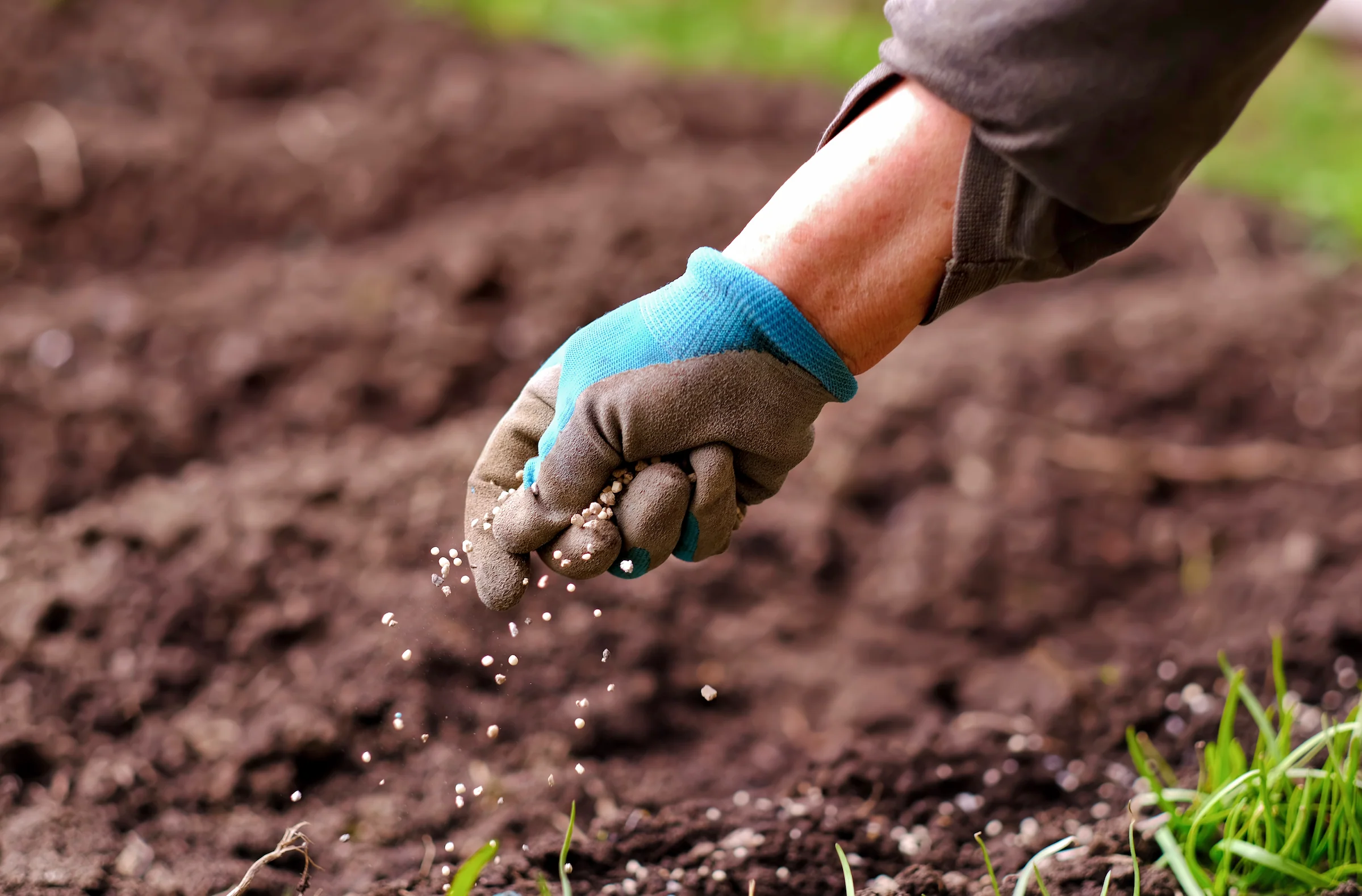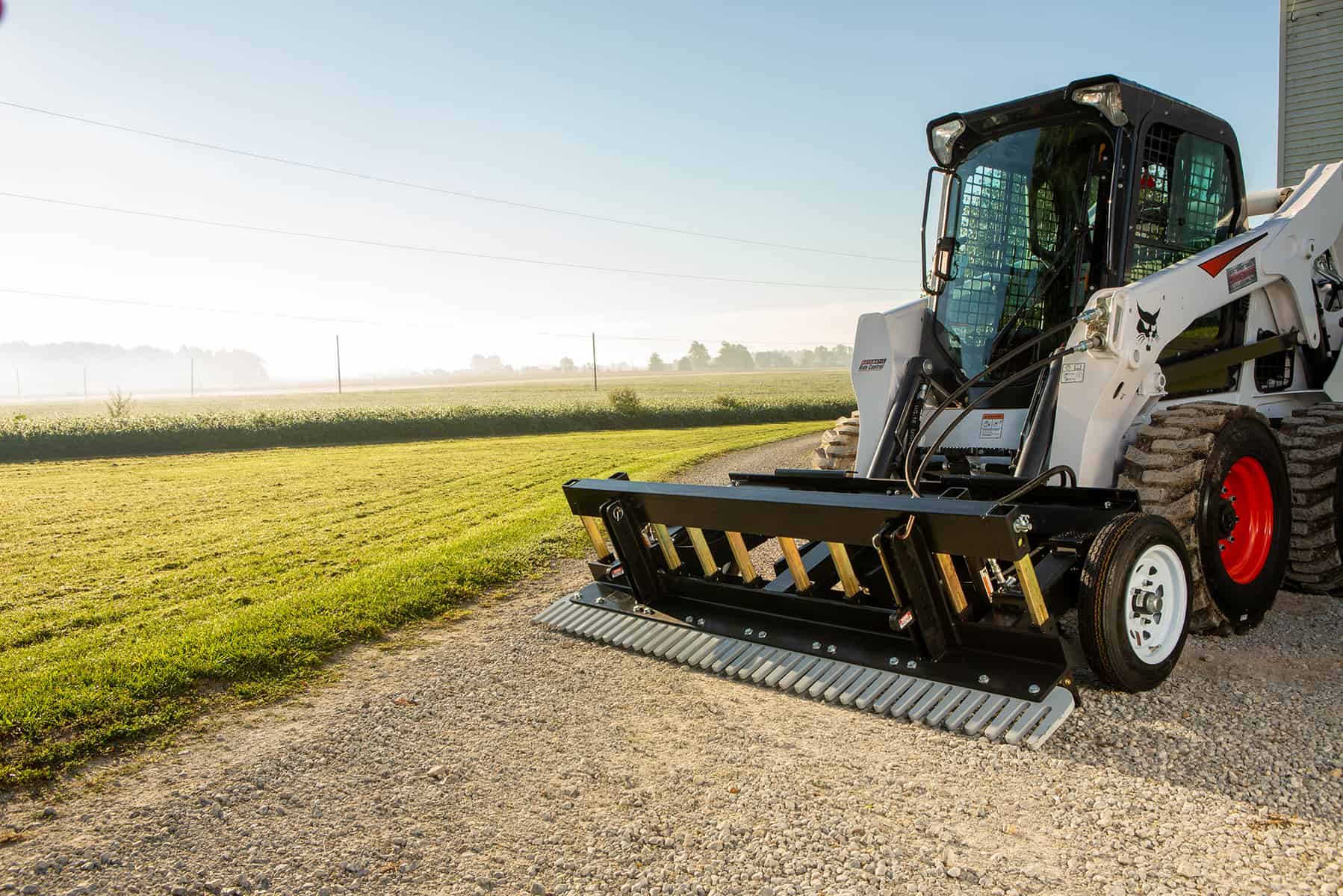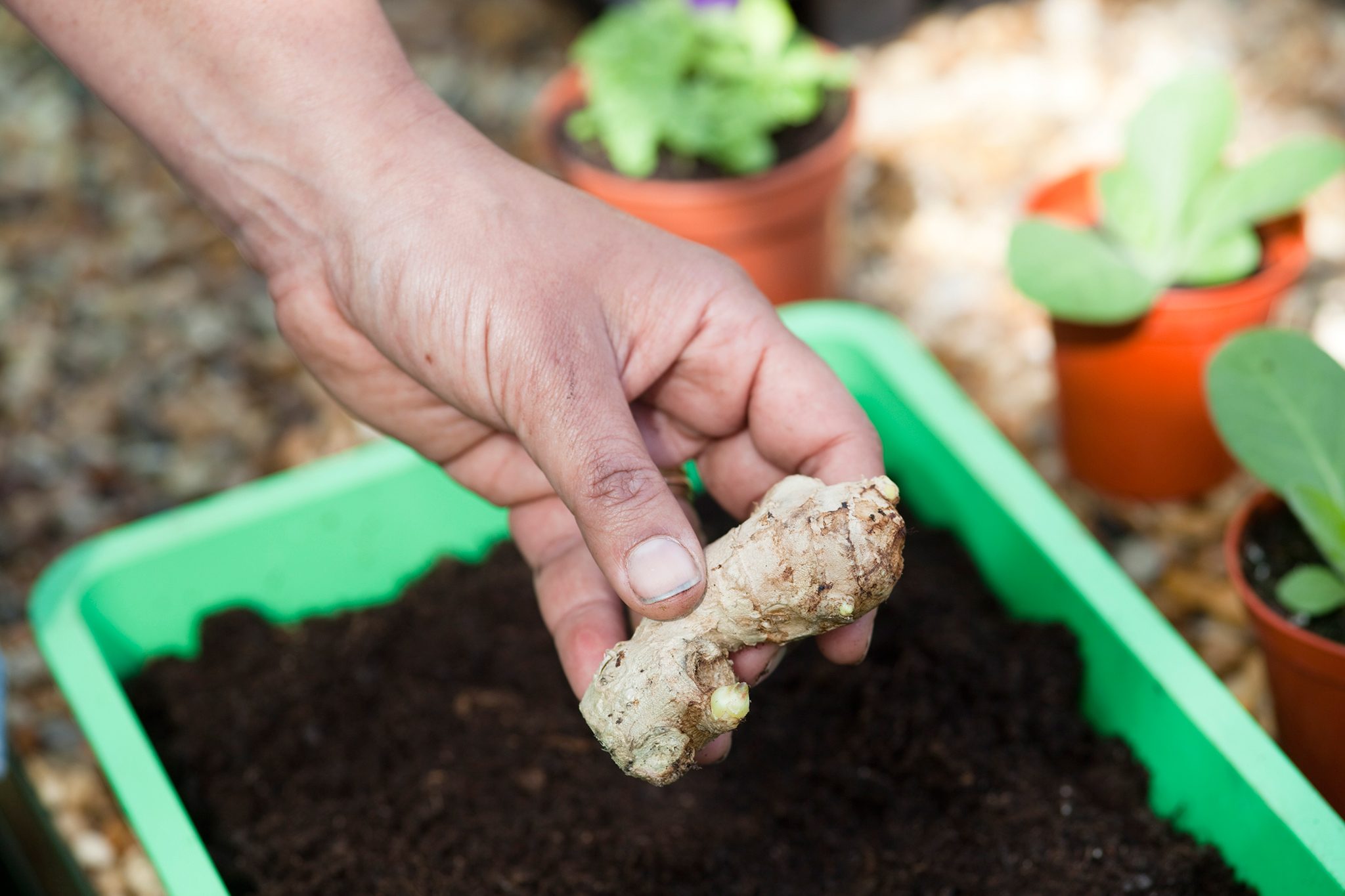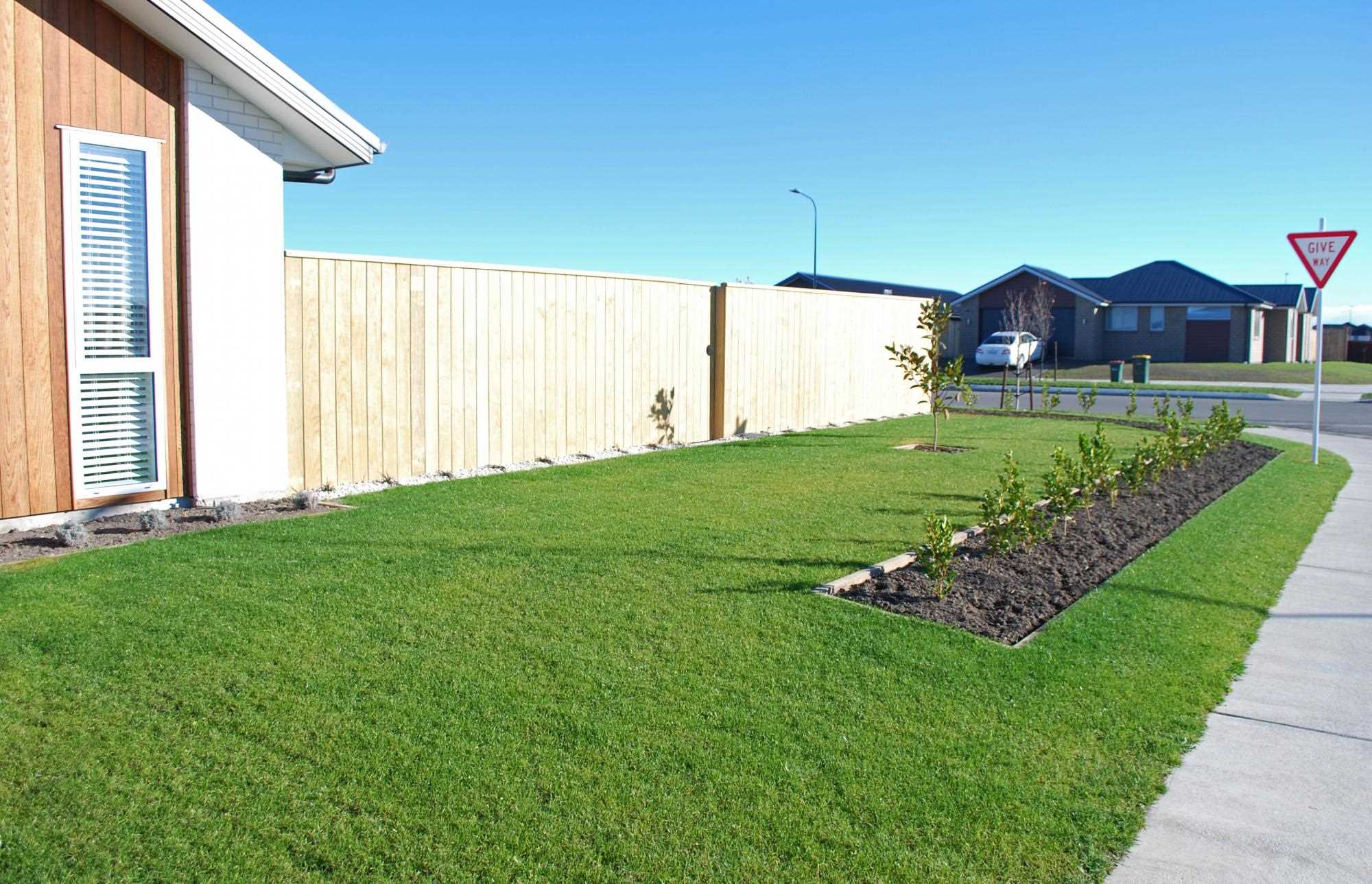Home>Gardening Basics>Understanding Soil>How To Prepare Soil For Planting Grass


Understanding Soil
How To Prepare Soil For Planting Grass
Published: August 28, 2023
Learn the essential steps to prepare soil for planting grass with our comprehensive guide. Gain a deeper understanding of soil composition and how to create the perfect environment for healthy growth.
(Many of the links in this article redirect to a specific reviewed product. Your purchase of these products through affiliate links helps to generate commission for Chicagolandgardening.com, at no extra cost. Learn more)
Table of Contents
Introduction
Preparing the soil is a critical step when it comes to planting grass. The quality of the soil directly affects the growth and health of your grass, so it’s essential to get it right from the start. Whether you’re starting a new lawn or rejuvenating an existing one, understanding how to prepare the soil properly can make a significant difference in the success of your grass.
Having healthy soil is crucial because it provides the necessary nutrients and a favorable environment for grass roots to grow deep and strong. Additionally, well-prepared soil allows for proper water drainage and aeration, promoting optimal grass growth and reducing the risk of disease and pests.
In this article, we will take you through a step-by-step process of preparing the soil for planting grass. From clearing the area to watering and maintaining the soil, we’ll cover all the essential tasks to ensure that your grass gets off to the best possible start. So, let’s dive in and get your soil ready for a lush and green lawn!
Step 1: Clearing the Area
The first step in preparing the soil for planting grass is to clear the area of any existing vegetation, debris, or obstacles. Start by removing any rocks, branches, or large debris that may hinder the grass’s growth or interfere with the soil preparation process.
If there are existing plants or weeds on the site, you have two options. You can either dig them out by hand or use an herbicide to kill them. If you opt for herbicides, make sure to choose one that is specifically labeled for use on lawns and follow the instructions closely.
Once you’ve cleared away the larger debris and removed any unwanted vegetation, you can use a rake or a shovel to level the ground. This will help ensure an even and smooth surface for the next steps of soil preparation.
Clearing the area also involves identifying any potential drainage issues. Take note of any low spots or areas where water tends to accumulate. These areas may need additional attention during the soil preparation process to improve drainage and prevent waterlogging.
Remember, a clean and well-leveled surface is essential for establishing a healthy and uniform lawn. By thoroughly clearing the area, you’re creating a blank canvas for the next steps of soil preparation, setting the stage for successful grass growth.
Step 2: Testing the Soil
Before you can properly prepare the soil for planting grass, it’s vital to understand its composition and nutrient levels. Testing the soil will provide valuable insights into its pH level, nutrient deficiencies, and overall health, allowing you to make informed decisions about soil amendments.
Soil testing kits are readily available at gardening centers or through online suppliers. These kits typically include instructions on how to collect soil samples from various areas of your lawn. Be sure to collect samples from different parts of the yard to account for any variations in soil composition.
Once you’ve collected the soil samples, follow the instructions provided by the testing kit to analyze the soil. The results will typically include information about the soil’s pH level and the levels of essential nutrients such as nitrogen, phosphorus, and potassium.
Based on the test results, you can adjust the pH level and address any nutrient deficiencies. Lime can be added to raise the pH level if it’s too acidic, while sulfur can be used to lower it if it’s too alkaline. Additionally, specific fertilizers or organic amendments can be added to correct nutrient imbalances.
By testing the soil, you can tailor your soil preparation and amendment efforts to suit your lawn’s specific needs. This will provide the optimal conditions for grass to thrive and establish a healthy root system.
Remember to conduct periodic soil tests in the future as well. This will help you monitor the soil’s nutrient levels and make any necessary adjustments to ensure continued lawn health and vitality.
Step 3: Removing Weeds and Debris
Clearing the area of weeds and debris is an essential step in preparing the soil for planting grass. Weeds compete with grass for nutrients, water, and sunlight, impeding its growth and overall health. Similarly, debris can hinder the grass from establishing strong roots and absorbing essential nutrients from the soil.
Begin by thoroughly inspecting the area and manually removing any visible weeds. Use a garden hoe or a small hand tool to uproot the weeds, ensuring you remove the entire root system.
For larger areas or more stubborn weeds, consider using weed control methods such as herbicides. Be sure to choose a herbicide that is safe for grass and follow the instructions carefully to avoid damaging your newly planted lawn.
Next, focus on removing any debris, such as fallen leaves, dead grass, or tree branches. Rake the area to clear away these materials, ensuring you create a clean and debris-free surface for the grass to grow on.
Not only does removing weeds and debris improve the aesthetics of your lawn, but it also creates a healthier environment for the grass to thrive. With fewer competing plants and obstacles, your grass will have better access to essential resources, leading to a more robust and vibrant lawn.
Remember to regularly monitor your lawn for any new weed growth and promptly remove them to prevent them from spreading and taking over your grass. Additionally, periodic removal of debris will help maintain the cleanliness and overall health of your lawn.
Step 4: Loosening the Soil
Loosening the soil is a crucial step in preparing the ground for planting grass. It helps to improve drainage, enhances root penetration, and creates a better environment for the grass to establish a strong and healthy root system.
Start by using a garden fork or a tiller to break up compacted soil. Work in a crisscross pattern, making sure to penetrate at least 6 inches deep into the soil. This process helps to loosen the soil, allowing air, water, and nutrients to reach the grass’s roots more effectively.
If the soil is particularly compacted, you may need to repeat the process, giving extra attention to heavily trodden areas or spots with poor drainage. Breaking up compacted soil provides an opportunity for the grassroots to spread more easily, leading to healthier and more resilient grass.
After loosening the soil, remove any rocks, roots, or debris that may have been brought to the surface. These can hinder grass growth and make mowing more challenging in the future.
Once the soil is loosened and cleared, use a rake to level the surface. Smooth out any uneven areas to ensure a consistent and uniform lawn. A leveled surface will make it easier for the grass seeds to establish and provide a visually appealing finished result.
Remember, the goal of loosening the soil is to create an environment that promotes healthy root growth. By breaking up compacted soil and leveling the surface, you provide the grass with the best chance of establishing a strong foundation and thriving in the long run.
Step 5: Amending the Soil
Amending the soil is a crucial step in preparing the ground for planting grass. It involves improving the soil’s fertility, structure, and overall health by adding organic matter and necessary nutrients.
Before adding any amendments, refer to the results of your soil test from Step 2. This will guide you in determining the specific needs of your soil and the appropriate amendments to add.
One common amendment is organic matter, such as compost or well-rotted manure. These materials add nutrients, improve soil structure, and enhance moisture retention. Spread a layer of organic matter on top of the soil and use a rake to work it into the top few inches. Aim for a uniform layer across the entire area.
If your soil is lacking in specific nutrients, you can also incorporate fertilizer into the soil. Choose a fertilizer formulation that is suited for grass and follow the instructions for application rates and timing. Be careful not to overdo it, as excessive fertilizer can harm the grass and the environment.
In some cases, you may need to adjust the soil pH. If your soil test indicates a pH imbalance, you can add materials such as lime to raise the pH or sulfur to lower it. Always follow the recommended application rates to achieve the desired pH level.
After adding the amendments, use a rake to thoroughly mix them into the soil. This ensures that the organic matter and nutrients are evenly distributed and readily available to the grass roots.
Amending the soil is crucial for providing the grass with the necessary nutrients and creating an optimal growing environment. By adding organic matter, balancing the pH, and supplementing with appropriate fertilizers, you are setting the stage for a healthy, vibrant lawn.
Regularly monitoring the soil and making adjustments as needed will help maintain optimal soil health and ensure the long-term success of your grass.
Step 6: Leveling the Surface
Leveling the surface is an important step in preparing the soil for planting grass. A smooth and even surface provides a uniform base for the grass to grow and allows for easier mowing and maintenance in the future.
To start, use a rake or a leveling tool to identify any uneven areas or low spots on the ground. These areas may need to be filled in or leveled out to ensure a consistent and aesthetically pleasing lawn. You can also use a long board or a tamper to press down on high spots and raise low areas, creating a more even surface.
Pay special attention to any depressions or areas where water tends to accumulate. These spots can lead to waterlogging and hinder grass growth. Use a shovel to remove excess soil from high spots and add soil to low spots to achieve a level surface.
Once you’ve identified and addressed any uneven areas, use a rake to smooth out the entire surface. Work the rake back and forth, using gentle strokes to create a uniform and level surface. Take your time to ensure that there are no noticeable bumps or slopes.
Leveling the surface not only improves the aesthetic appeal of the lawn but also allows for more even watering and promotes uniform grass growth. Proper soil leveling ensures that the grass roots have equal access to water and nutrients throughout the lawn, contributing to a healthy and lush lawn overall.
Remember to periodically inspect your lawn for any signs of unevenness and make necessary adjustments to maintain a level surface. This will contribute to a visually pleasing and well-maintained lawn.
Step 7: Watering the Soil
Proper watering is a crucial step in preparing the soil for planting grass. Adequate moisture is essential for seed germination and the establishment of healthy grass roots.
Once you have leveled the soil and added any necessary amendments, it’s time to water the soil. Begin by thoroughly saturating the soil with water. Use a gentle spray or a sprinkler system to ensure even coverage across the entire area.
After the initial watering, it’s important to maintain consistent moisture in the soil. This is especially critical during the germination and establishment stages of the grass. Keep the soil consistently moist, but be careful not to overwater, as this can lead to poor root development and other issues.
Monitor the soil moisture levels regularly to determine when additional watering is needed. Check the top inch of soil and water when it feels dry to the touch. It’s generally recommended to water deeply but infrequently, encouraging the grass roots to grow deep into the soil.
Timing is also essential when it comes to watering. Watering early in the morning or in the late afternoon is ideal, as it allows enough time for the grass blades to dry before evening, minimizing the risk of disease.
As the grass starts to grow and establish itself, gradually reduce the frequency of watering. This encourages the roots to grow deeper in search of water and promotes a more drought-tolerant lawn in the long run.
Remember that proper watering plays a significant role in the successful establishment and growth of your grass. By providing adequate moisture to the soil, you are creating optimal conditions for the grass to develop healthy roots and thrive in your lawn.
Monitor the soil moisture regularly and adjust your watering schedule as needed to ensure the health and vitality of your grass.
Step 8: Planting Grass Seeds
Planting grass seeds is a crucial step in the soil preparation process. It’s important to choose the right type of grass seed for your region’s climate and soil conditions and follow proper seeding techniques for successful germination and establishment.
Before planting, it’s crucial to prepare the soil by loosening it, removing weeds, and amending it if necessary. Once the soil is properly prepared, use a broadcast spreader or a handheld spreader to evenly distribute the grass seeds over the entire area.
Refer to the seed packaging for the recommended seeding rate, as this can vary depending on the grass species. Make sure to spread the seeds evenly to achieve a uniform coverage. Using a rake, gently work the seeds into the top layer of soil to ensure good seed-to-soil contact.
After seeding, lightly compress the soil using a lawn roller or by walking over the area. This helps the seeds make firm contact with the soil, aiding in germination.
Proper watering is crucial for successful seed germination. Use a gentle spray or a sprinkler system to water the seeded area, making sure to keep the soil consistently moist but not saturated. Follow the watering guidelines provided on the seed packaging to ensure the best results.
Germination typically takes between 7 to 21 days, depending on the grass species and growing conditions. During this time, it’s important to protect the newly seeded area from foot traffic, animals, and excessive erosion. Consider using straw or a specialized erosion control blanket to provide some protection and maintain moisture in the soil.
Once the grass begins to grow and reaches a height of around 3 inches, gradually reduce the frequency of watering and transition to a regular lawn care routine, including mowing and fertilizing.
Remember, proper seeding techniques and adequate care during the establishment phase are crucial for a successful lawn. Following the right steps and providing the necessary conditions will help ensure the healthy establishment of your grass and contribute to a beautiful and thriving lawn.
Step 9: Maintaining the Soil
Maintaining the soil is an ongoing process that plays a critical role in the health and longevity of your lawn. By implementing proper maintenance practices, you can ensure that the soil remains fertile, provides adequate drainage, and supports the growth of a lush and vibrant lawn.
One essential aspect of soil maintenance is regular aeration. Over time, soil can become compacted, limiting the airflow and nutrient absorption. Aerating the soil helps to alleviate compaction and create space for oxygen, water, and nutrients to reach the grass roots. Use a core aerator or a spike aerator to create small holes in the soil, promoting healthy root growth.
Fertilizing the soil is another vital aspect of maintenance. Regularly feed your lawn with appropriate fertilizers based on the specific needs of your grass and soil. Follow the recommended application rates and timing to avoid overfertilization, as this can lead to nutrient imbalances and negative impacts on the environment.
In addition to aeration and fertilization, proper watering is crucial for maintaining healthy soil. Water deeply and infrequently, ensuring that the soil is thoroughly moistened without becoming saturated. This encourages deep root growth and helps the grass become more resilient to drought.
Mulching is another effective method of maintaining soil health. Spread a layer of organic mulch, such as wood chips or straw, around the base of the grass. Mulch helps to retain moisture, regulate soil temperature, and suppress weed growth. As the mulch breaks down over time, it also adds organic matter to the soil, improving its structure and fertility.
Regularly monitor your lawn for signs of compacted soil, nutrient deficiencies, or excessive thatch buildup. These issues can directly impact the health of the soil and the grass. Implement corrective measures as necessary, such as aerating, fertilizing, or dethatching, to maintain optimal soil conditions.
Lastly, practicing proper mowing techniques contributes to soil health. Avoid cutting the grass too short, as this can stress the grass and weaken the soil’s ability to retain moisture. Set your mower blade to the appropriate height for your grass species and aim to remove no more than one-third of the grass blade during each mowing session.
By regularly implementing these maintenance practices, you can ensure that your soil remains healthy and provides the necessary foundation for a beautiful and thriving lawn.
Conclusion
Preparing the soil for planting grass is a crucial step in establishing a healthy and vibrant lawn. By following a systematic approach and implementing the necessary tasks, you can create an optimal environment for grass growth and ensure long-term success.
Starting with clearing the area and testing the soil, you can assess the current conditions and make informed decisions about how to proceed. Removing weeds and debris, loosening the soil, and amending it with organic matter and necessary nutrients helps to create a fertile and well-balanced substrate for the grass to thrive.
Leveling the surface provides a uniform base, while proper watering and planting of grass seeds ensure successful germination and establishment. Ongoing maintenance practices, such as aeration, fertilization, watering, and soil monitoring, are vital to sustaining a healthy and vibrant lawn.
Remember that each step in the soil preparation process contributes to the overall health and longevity of your lawn. Taking the time and effort to properly prepare the soil ensures that the grass has the best chances of thriving, with deep and healthy root systems.
Regular monitoring and adjustment of soil moisture, nutrient levels, and overall lawn health are necessary for long-term success. Continually assess the condition of your lawn and make necessary adjustments to maintain optimal soil fertility and grass growth.
By following these steps and implementing proper soil preparation techniques, you can lay the foundation for a beautiful, lush, and vibrant lawn that you can enjoy for years to come.








